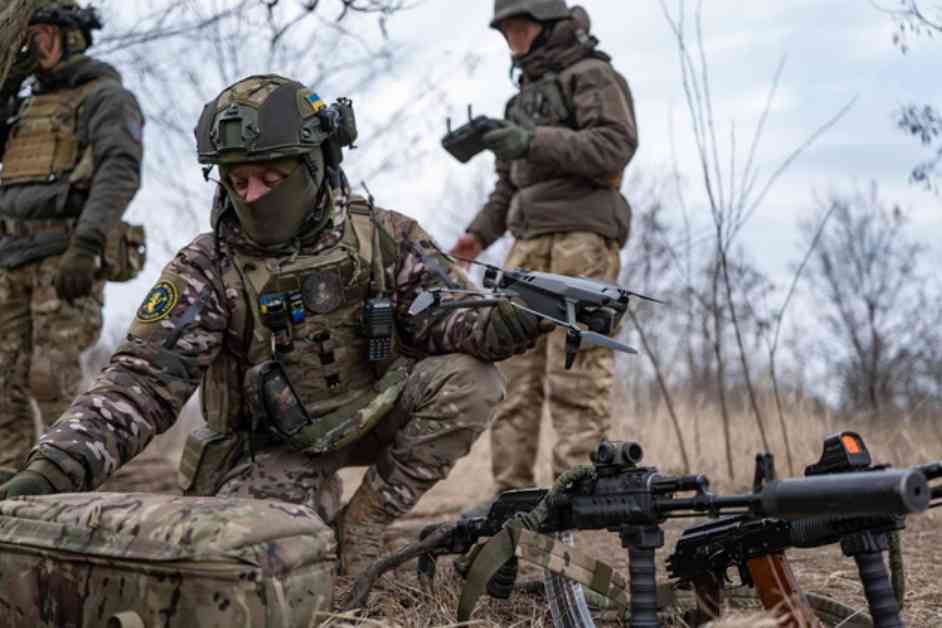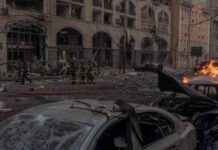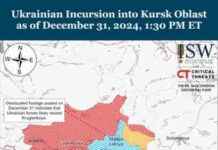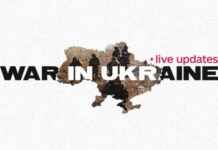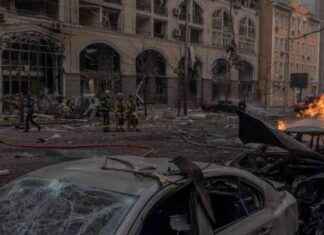The recent developments in the ongoing conflict between Ukraine and Russia have sparked significant interest and concern among global observers. This week, several key events have unfolded that shed light on the shifting dynamics of the war, the evolving military strategies, and the international responses to the crisis. As a seasoned journalist, it is essential to delve into these intricate details and provide a comprehensive analysis of the situation.
Ukrainian Drone Advancements: A Game-Changer in Modern Warfare
One of the most significant revelations this week was the emergence of cutting-edge Ukrainian drones manufactured by Vyriy Drone. These drones, equipped with made-in-Ukraine components, represent a remarkable milestone in the country’s military capabilities. With the ability to carry payloads equivalent to mortar rounds or armor-piercing projectiles, these drones pose a lethal threat to enemy forces.
The mass production of these Ukrainian FPV drones at a significantly lower cost than their international counterparts signifies a pivotal moment in modern warfare. The exponential growth of Ukraine’s drone manufacturing industry underscores the nation’s commitment to enhancing its national security and defense capabilities. As the conflict continues to escalate, the strategic deployment of drones on the front lines is poised to reshape the dynamics of the battlefield.
Expert insights reveal that the increasing proliferation of FPV drones along the front line will create a formidable dead zone, where enemy movement is surveilled and targeted with precision. The Ukrainian Armed Forces’ relentless efforts to bolster their drone capabilities signal a shift towards a more lethal and technologically advanced military apparatus. The strategic advantage gained through drone warfare underscores the critical role of innovative technologies in modern conflict resolution.
The Kursk Retreat: Debunking Misinformation and Assessing the Strategic Landscape
Amidst the unfolding developments in the conflict, the recent Kursk retreat has sparked speculation and misinformation regarding the Ukrainian military’s tactical maneuvers. Contrary to sensationalized reports, Ukrainian forces conducted a strategic withdrawal from their positions inside Russia, regrouping in new defensive positions outside the town of Sudzha. While casualties and vehicle losses were incurred during the retreat, the Ukrainian military’s resilience and strategic acumen remain intact.
The absence of widespread panic, calls for emergency assistance, or indications of a collapse in Ukrainian defenses underscores the steadfast resolve of the nation’s armed forces. Despite the challenges and obstacles faced during the retreat, Ukrainian units maintained stability along the front lines, dispelling narratives of strategic failures or imminent defeat. The successful redeployment of forces and the consolidation of defensive positions underscore the professional competence and adaptability of Ukrainian military personnel.
Expert analysis confirms that the strategic realignment in the Kursk sector reflects a calculated and strategic decision by Ukrainian commanders to optimize defensive capabilities and fortify positions against potential threats. The situational awareness and operational readiness of Ukrainian units in the aftermath of the retreat affirm the military’s preparedness and resilience in the face of evolving battlefield dynamics. As the conflict continues to unfold, the strategic significance of the Kursk retreat underscores the complexities and nuances of modern warfare.
European Defense Initiatives: A Shift in Priorities and Strategic Alliances
In the realm of European defense initiatives, recent developments highlight a paradigm shift in national security strategies and collaborative efforts. The resolution adopted by the French parliament to seize Russian assets and redirect funds towards European defense projects signifies a unified stance against external threats and aggression. The commitment of European nations to bolstering defense capabilities and fostering joint planning for national security underscores the collective resolve to enhance regional stability and deter potential adversaries.
The EU’s white paper outlining plans to overhaul European defense industries and streamline defense contracting reflects a proactive approach to modernizing military capabilities and strengthening defense alliances. The emphasis on sourcing critical components from EU-based producers signifies a strategic shift towards enhancing domestic defense capabilities and reducing reliance on external suppliers. The concerted efforts of European defense ministers to engage in collaborative planning and cooperation with Ukraine demonstrate a commitment to supporting the country’s defense efforts and fostering regional security.
As Germany embarks on its largest armaments program since the Nazi period, the strategic implications of increased defense spending and infrastructure development underscore a renewed commitment to regional security and deterrence. The allocation of significant funds for defense initiatives and support for Ukraine signals a pivotal moment in Germany’s defense policy and its role in shaping European security dynamics. The convergence of European defense priorities and strategic alliances underscores the evolving landscape of international security and the imperative of collective defense against common threats.
In conclusion, the recent developments in the Ukrainian-Russian conflict and the broader European defense landscape underscore the complexities and challenges inherent in modern warfare. The strategic advancements in drone technology, the tactical maneuvers on the front lines, and the collaborative defense initiatives among European nations reflect a dynamic and evolving security environment. As the conflict continues to unfold, it is essential to remain vigilant, informed, and proactive in addressing emerging threats and safeguarding regional stability.
